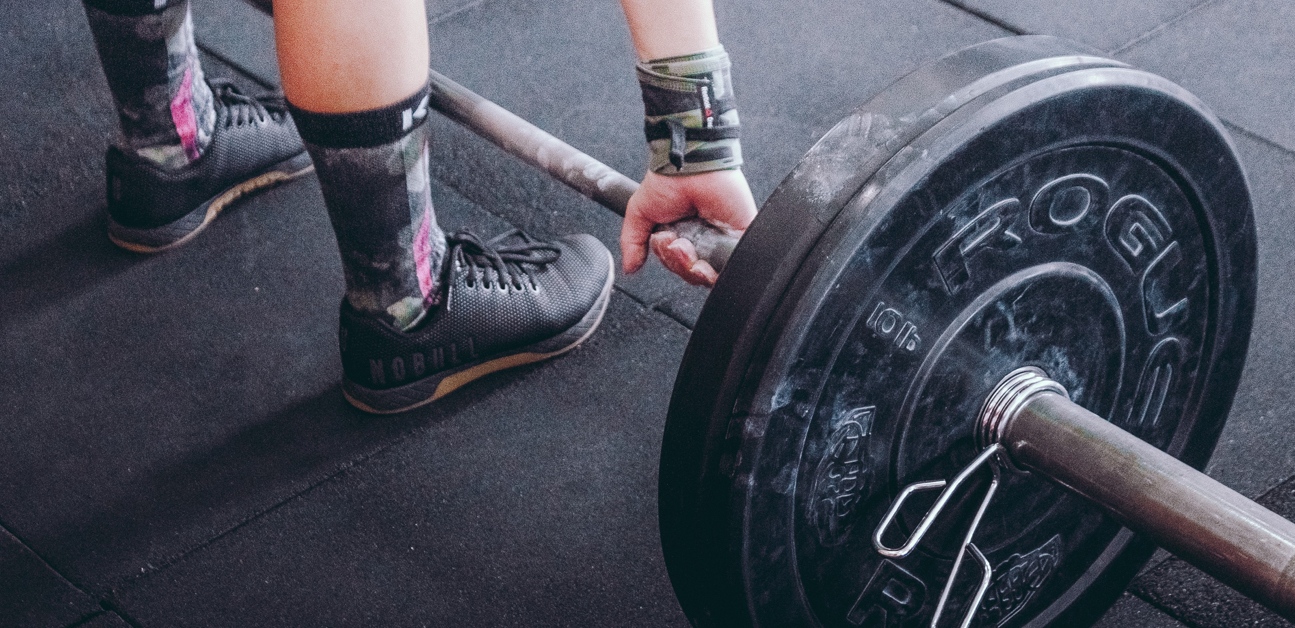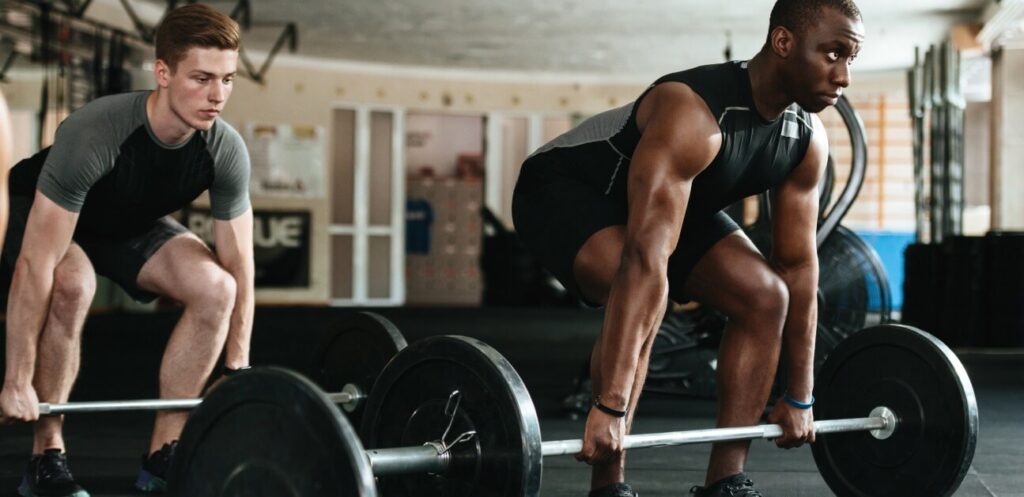How Strength Training can Improve Endurance For Cyclists

We cyclists ask a lot of our muscles. We expect them to push the pedals continuously for hours on end, to be ready to surge over climbs and sprint at maximum intensity, and to recover and do it all over again tomorrow.
But not all muscle is the same, and different muscle types function in different ways. Furthermore, many cyclists don’t realize that directly addressing muscular strength can also improve endurance and efficiency. Let’s examine muscle types and consider how building strength can make you faster.
For more on strength training check out Ask A Cycling Coach Ep 277.
Muscle Fibers And Motor Units
The basic structural elements of muscles are muscle fibers. Fibers of each type cluster into bunches called motor units, which bunch together to form a muscle. Because of their distinct fiber composition, different motor units have different strengths. This makes your muscles more versatile; by selectively recruiting motor units, the same muscle can pedal aerobically for hours, and also generate the anaerobic surge of a sprint.
Human muscle fibers have traditionally been divided into 3 types, differentiated by how they are fueled and how they output force. Although recent research reveals a broader range of minor fiber types and subtypes, the 3-type model is still commonly used and useful in its simplicity.
Muscle Fiber Types
- Slow Twitch Muscle Fibers (Type 1)
These fibers specialize in low-intensity sustained activity, such as riding at an easy endurance pace. They contain lots of mitochondria, which they use to efficiently fuel themselves through aerobic metabolism. If properly fueled they can sustain almost indefinitely, but they can not exert high force. - Fast Oxidative Glycolitic Fibers (Type 2A)
These fibers have lower mitochondrial density than Type I fibers, and are fueled by a mixture of aerobic and anaerobic metabolism. They have a higher force output but fatigue more quickly. These fibers are recruited as intensity increases. - Fast Glycolitic Muscle Fibers (Type 2B or 2X)
These powerful fibers exert the highest force for the shortest time. They rely exclusively on stored ATP and anaerobic metabolism and take a long time to recover, and are the fibers responsible for generating the peak power of a sprint. Note that while these have traditionally been referred to as type IIb fibers, some studies label them IIx in humans.
Adaptive Training
Get the right workout, every time with training that adapts to you.
Check Out TrainerRoadFunctional Strength Training for Endurance Athletes
There’s a common misconception amongst cyclists that strength training immediately leads to expanding muscles and weight gain. Many riders intentionally avoid strength training as a result, which is ironic given that muscles are the driving force behind turning the pedals. Well-applied strength training can increase muscular recruitment, allowing riders to better utilize their existing muscle mass. It can also strengthen and improve the composition of existing muscles, leading to greater efficiency and increased power output. This strength training can take two forms:
Low Force, High Velocity (LFHV)
Otherwise referred to as plyometrics, LFHV exercises use body weight (or very low additional load) and explosive movements over multiple repetitions. The goal is to increase your maximal force production, by training neuromuscular pathways to activate the muscles as quickly as possible. Examples include jumping rope, box jumps, and jump squats.
LFHV training is easy, since it requires little special equipment. It’s unlikely to cause injury because of light loads, and it is not normally associated with increases in body weight or muscle mass. However, evidence is mixed as to how effective these exercises are for actually improving cycling performance.
High Force, Low Velocity (HFLV)
These exercises use heavy loads (80% – 100% of 1 rep max) and occur over just a few reps. Research demonstrates surprisingly wide-ranging benefits of this type of strength training for endurance athletes. Compared to LFHV, these exercises elicit improvements in power output across a wide range of loads. They are shown to improve movement economy, power at VO2 max, and overall time trial performance. Studies also show this training to be effective for athletes of all experience levels, with the greatest improvements in movement efficiency demonstrated by amateurs and non-elite riders. This means for most of us, HFLV training may be low-hanging fruit for big gains. What are some specific ways this training improves cycling performance?
Adaptive Training
Get the right workout, every time with training that adapts to you.
Check Out TrainerRoadPeak Force Improvements
A major result of addressing muscular strength through HFLV training is an increase in peak force. On the bike, this directly translates into improvements in the overall maximum torque you can generate during a sprint. However, this can have benefits for more than just your top-end power. By increasing your ability to produce peak force, you also increase your opportunity to lift your sustainable power.
The reason for this makes sense if you think about it. Metabolically, it’s a big ask to expect your muscles to sustainably operate at a high percentage of their absolute maximum. If your peak power is 600w, a 300w FTP would mean operating at 50% capacity for sustained periods. But if you raise your peak power to 1200w, that same FTP only requires 25% of your maximum. By increasing your overall strength, you open the door to potentially easier improvements in FTP.
Better Efficiency
As you pedal your bike, a complicated series of muscular interactions occurs. Some muscles activate, others turn off, and others stabilize the system. HFLV training helps to fine-tune coordination of these muscles. It does this by increasing agonist activation, strengthening the motion of the primary mover (the quads). It also improves synergist activation, the recruitment of secondary and stabilizing muscles. Finally, it decreases antagonist activation, lessening the action of muscles that resist the intended motion. You probably lubricate your bike’s drivetrain regularly, and through HFLV training you can have an analogous effect on the efficiency of your legs.
Strengthening Aerobic Fibers
Perhaps most notably, HFLV training can greatly improve cycling economy during the latter part of long rides – in other words, when the decisive moves usually happen in races. Studied riders who used this method along with their regular endurance training had lower heart rates, lower blood lactate concentrations, and stronger final sprints than athletes who only used endurance training. While strength training is typically associated with anaerobic fibers, these results suggest HFLV also strengthens Slow Twitch (Type 1) fibers. Stronger aerobic fibers are better able to handle the burden of most efforts during a hard ride. Recruitment of more easily-fatigued anaerobic fibers is delayed, saving more of their strength for the final sprint.
Adaptive Training
Get the right workout, every time with training that adapts to you.
Check Out TrainerRoadIn Conclusion
Muscular strength, especially when addressed through High Force, Low Velocity training, can improve more than just your final sprint. Without adding muscle mass or body weight, it can facilitate increases in FTP, make your pedal stroke more efficient, and leave you fresher for the end of your race.
Tracking Strength Training with Working Sets
TrainerRoad allows you to log your strength training sessions by adding “Working Sets” to your calendar. A working set refers to a set performed close to muscular failure keeping 1-2 reps in reserve. By recording these, you provide TrainerRoad with detailed information about your strength workouts, enabling better analysis and integration with your overall training plan.
Example of Working Sets:
- 4 x 12 Shoulder Press
- 4 x 10 (each leg) Bulgarian Split Squat
- 3 x 12 Deadlift
- 4 x 10 Burpee
- 3 x 15 Sit-Up
That’s a grand total of 18 working sets.
For detailed instructions on adding working sets, visit the TrainerRoad Support Center.
More Strength Training Resources
References:
- Bazyler, Caleb D. MA; Abbott, Heather A. M.Ed; Bellon, Christopher R. MA; Taber, Christopher B. MS; Stone, Michael H. PhD Strength Training for Endurance Athletes, Strength & Conditioning Journal: April 2015 – Volume 37 – Issue 2 – p 1-12 doi: 10.1519/SSC.0000000000000131
- Schiaffino, S., & Reggiani, C. (2011). Fiber Types in Mammalian Skeletal Muscles. Physiological Reviews, 91(4), 1447–1531. doi:10.1152/physrev.00031.2010
- Scott, W, et. al, Human Skeletal Muscle Fiber Type Classifications, Physical Therapy, Volume 81, Issue 11, 1 November 2001, Pages 1810–1816, https://doi.org/10.1093/ptj/81.11.1810
- Staron, R. S. (1997). Human Skeletal Muscle Fiber Types: Delineation, Development, and Distribution. Canadian Journal of Applied Physiology, 22(4), 307–327. doi:10.1139/h97-020
- Talbot J, Maves L. Skeletal muscle fiber type: using insights from muscle developmental biology to dissect targets for susceptibility and resistance to muscle disease. Wiley Interdiscip Rev Dev Biol. 2016;5(4):518-534. doi:10.1002/wdev.230

